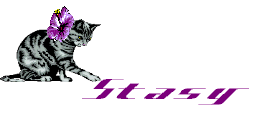


BONE: Uses Wrist Grab (CD on Cuneiform Records)
This CD from 2003 offers 54 minutes of heavy-handed prog rock.
Bone is: Nick Didkovsky (from Dr. Nerve) on guitar and computer software instruments, Hugh Hopper (ex-Soft Machine) on bass and synth, and John Roulat (from Forever Einstein) on drums.
Expect high energy and raucous delivery in this music. Prog rock sensibilities are immersed in a heavy metal disposition that results in a loud style that demands attention.
The guitar snarls and growls, often generating feedback enhancement that struggles to overwhelm the notes that initiated those discharges. Riffs become bent and contorted, twisting through the air like tortured metal beams supporting the heavens.
The bass rumbled like a huge animal of prehistoric origin, tearing up the ground with each chord and sending waves of demonstrative sound tearing through the audience's guts. Teeth become locked in a grimace of pleasure from this guttural sonic dosage.
The percussion is monstrous in proportion, as if mountains were colliding overhead, showering the audience with shards of beats and pounding rhythms that refuse to diminish once they've been fragmented.
Electronic gimmickry and looping samples are almost lost in the guitar/bass/drums maelstrom, serving as subliminal enhancement for music that rattles the strongest building's foundation.
That a heavy metal influence exists in Bone's music is impossible to deny or escape. The songs are brutal and passionately blistering. This union of Canterbury prog and New York City art rock produces a new entity that breaks every rule of either genre, flaunting breathless creativity with each mounting moment.

HUGH HOPPER: Jazzloops (CDR on Burning Shed)
This release from 2002 features 54 minutes of ambient jazz.
This recording is quite different from most Hopper releases, in that it does not actually feature a full band. Instead, Hopper plays guitar, bass, keyboards, voice, and sampling--utilizing samples by various guests (including Elton Dean, Steve Franklin, Pierre-Olivier Govin, Christine Janet, Frank van der Kooij, Didier Malherbe, John Marshall, Patrice Meyer, Nigel Morris, Simon Picard, Kim Weemhoff, and Robert Wyatt).
Wavering percussives pattering in the distance, ghostly horns resounding as if engaging in intricate acrobatics in watery depths, pensive woodwinds releasing their trilling calls through marshlike mists, nonlyrical voices reconstructed to resemble ouroborus chants, guitar riffs turned inside-out and tied in holiday bows... These interweaving samples attribute a dreaminess to the music that is remarkably eerie yet reassuring.
Hopper's bass rumbles through this glistening fog like an ancient creature stirring from dark recesses, extending tentative feelers throughout the mix, embellishing a harmony here, strengthening a melody there. Keyboards trickle like waterfalls defying gravity, streaming in every direction to form tenuous fingers that guide the tuneage with their subtle manipulations.
Indeed, the music itself is demonstrably different from Hopper's progrock technique, embracing a tranquillity that is unlike his normal compositions. His fiery fusion expressions are transformed into sedate structures that exude a smoldering ambience. Even when the music coalesces in a familiar mode (squealing guitar and swinging trombones and crackling basslines), there is a reserved sentiment dominating the melody, lacing the inferno with a stately grace that seethes with appeal. There is often the feeling that the tuneage leaks from subterranean depths, oozing through igneous strata and winding around pockets of incandescent magma.
This release is a surprising deviation in style and content, one that is thoroughly rewarding and entertaining on several levels. Jazz buffs will enjoy the sensual mistiness of the melodies, cafe jazz that luxuriates in a deceptive aimlessness. While ambient aficionados will thrill to the experimental nature of a forceful genre of music compressed into a lush microcosm that expands minimalism with inventive efforts.

NUCLEUS: Live in Bremen (double CD on Cuneiform Records)
This release features 98 minutes of elegant jazz recorded May 25, 1971 at the Gondel Filmkundsttheatre in Bremen, Germany.
This concert CD (featuring both sets) exemplifies what made Nucleus the vanguard of electric jazz-rock fusion long before Weather Report and Return to Forever popularized this crossover musical genre.
For this performance, Nucleus consisted of: Ian Carr (the band's founder and spiritual leader) on trumpet, flugelhorn, and percussion, Karl Jenkins (who later moved on to join Canterbury legends Soft Machine) on oboe and electric piano, Brian Smith (who would later appear on numerous albums by Maynard Ferguson) on saxophones, flute, and percussion, Ray Russell (reputed to be the man responsible for the guitar-freakout on the Dr No soundtrack) on guitar, Roy Babbington (who would also find himself with Soft Machine years later) on bass and John Marshall (who would go on to work with Jack Bruce before joining Soft Machine) on drums and percussion.
Mournful horns usher in a cacophony of wandering percussives and rumbling bass, a chaos that smoothly slides into a sultry, powerful cohesion with insistent trumpet and nimble guitar and slippery keyboards and driving drums. Engaging melodies emerge to control the flow, urging the instruments to a solid interfacing that often rivals Miles Davis for its sheer unison and grand appeal.
Stellar electric guitar explodes into a stunning solo, only to return to immersion in the seething harmony with skillful ease. Each instrument is afforded its own front-time, allowed to display its individual talent before rejoining the sonic gestalt.
Nucleus' real charisma lies in the manner in which all the instruments meld together, complimenting each other and producing a whole that is leagues greater than the parts. Such masterful interplay results in riveting tuneage that is true testament to the early days of the electrification of jazz--not just in the introduction of electric instruments, but in the ambitious application of such modern sounds to the traditional genre, evolving jazz into a maturity that transcends acoustical origins and strives to achieve a cooking flow that stands today as invigoratingly innovative.

| Entire page © 2003 Matt Howarth. All rights reserved. |
Webpage design by
 |